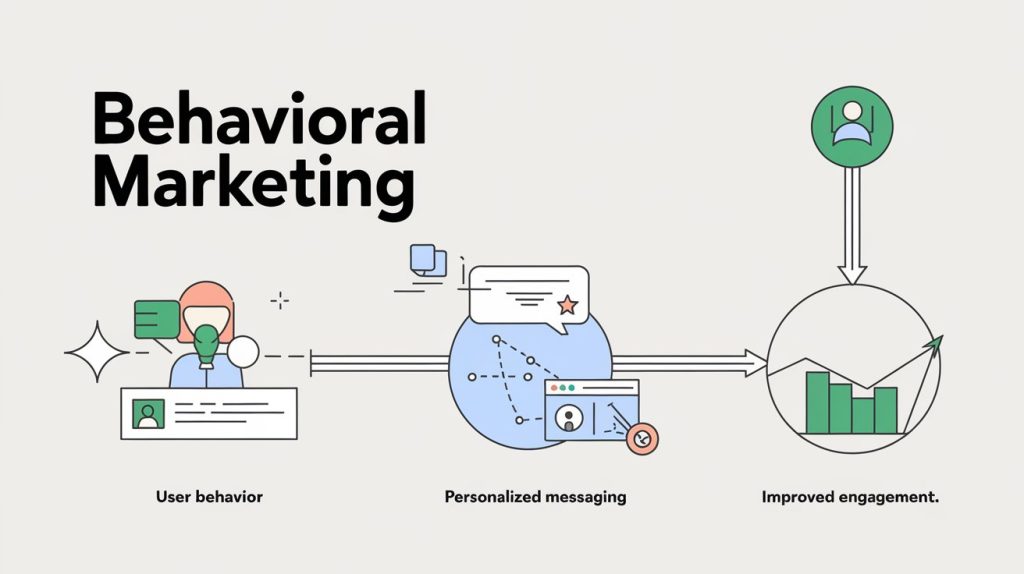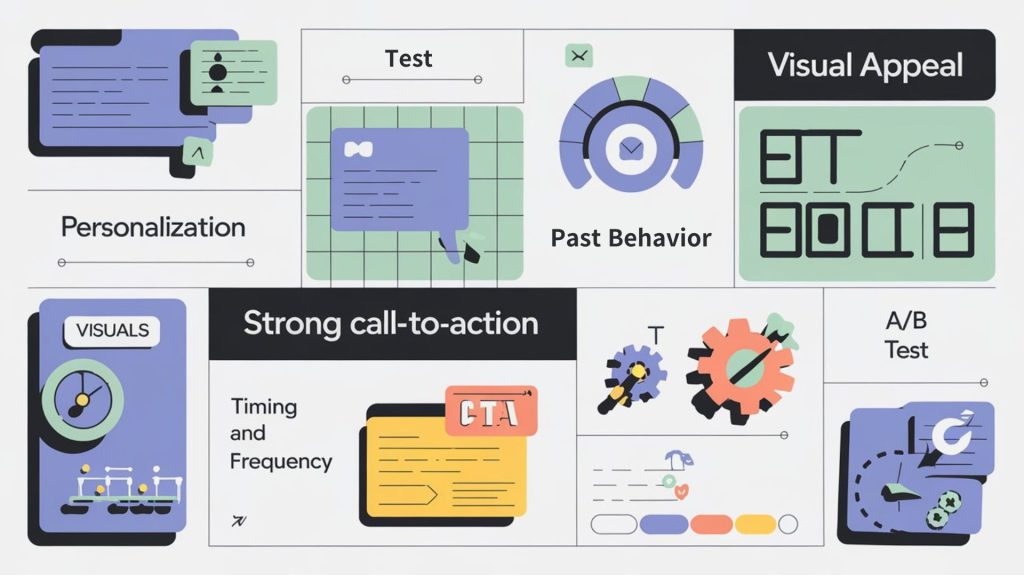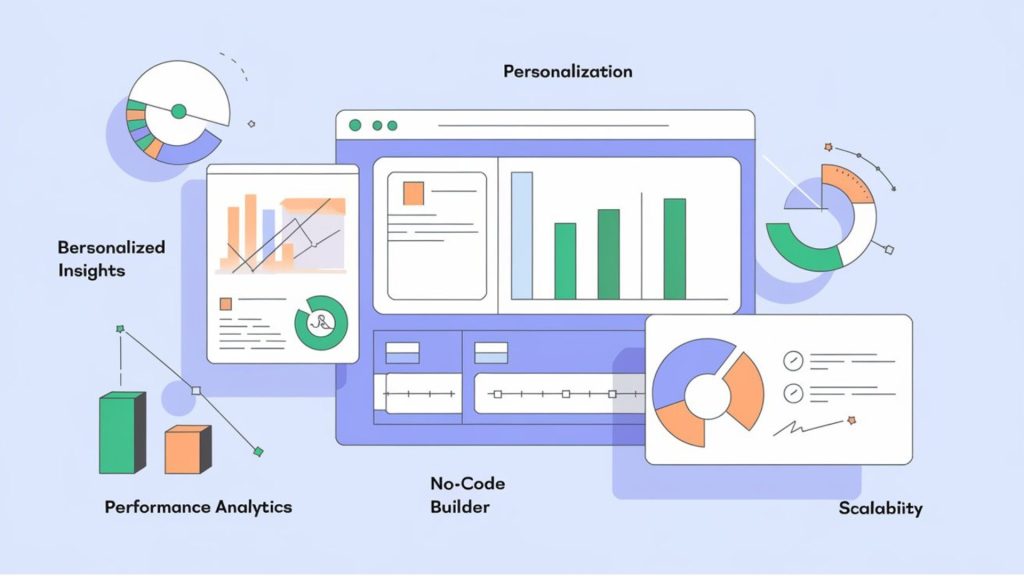In today’s digital ecosystem, delivering personalized user experiences is paramount. Users expect interactions that resonate with their individual behaviors and preferences. Traditional marketing methods, which often rely on broad demographic data, fall short in meeting these expectations. Enter behavioral marketing-a strategy that leverages real-time user behavior data to craft personalized, timely, and relevant in-app messages.
In-app messaging serves as a direct communication channel within the app, allowing businesses to engage users contextually. Unlike push notifications, which can be intrusive, in-app messages interact with users during their active app sessions, leading to higher engagement rates. Studies have shown that in-app messages can improve app retention rates by 27% (Business of Apps, 2023).
This comprehensive guide explores:
- The significance of behavioral marketing in today’s digital landscape.
- Strategies to utilize user behavior data for triggering effective in-app messages.
- Best practices for crafting compelling in-app messages.
- Real-world case studies demonstrating the impact of behavioral marketing.
- How IAM Studio can streamline the implementation of behavior-based in-app messaging.

The Significance of Behavioral Marketing
Behavioral marketing transcends traditional demographic-based strategies by focusing on individual user actions, such as page views, clicks, purchases, and time spent on specific features. This approach enables businesses to deliver personalized content that aligns with user interests and behaviors.
Key Benefits of Behavioral Marketing:
- Enhanced Personalization: Research indicates that 80% of consumers are more likely to make a purchase when brands offer personalized experiences (Epsilon, 2018).
- Improved User Engagement: In-app messaging boasts a 75% open rate, significantly higher than email and push notifications (Reckless, n.d.).
- Higher Conversion Rates: RCS campaigns have demonstrated an 80% read rate and conversion rates of up to 40%, showcasing their effectiveness in driving engagement and sales (Sinch, n.d.).
- Increased Retention: In-app messaging is a powerful tool for boosting retention rates by providing users with timely, relevant, and personalized communication (AxiomQ, 2024).
Why In-App Messages Amplify Behavioral Marketing:
In-app messages provide a unique advantage by engaging users during their active sessions, ensuring that communications are timely and contextually relevant. This immediacy leads to higher interaction rates compared to other channels.
Pro Tip: Users who receive in-app messages have engagement rates that are 131% higher than those who receive no messages (Braze, 2020).
Utilizing User Behavior Data for Effective In-App Messaging
To harness the full potential of in-app messaging, it’s essential to base your strategies on comprehensive user behavior analysis. Here’s how to approach this:
Step 1: Identify Key User Behaviors
Begin by pinpointing actions that indicate user intent or interest. These behaviors can include:
- Onboarding Progress: Monitoring completion rates to identify drop-offs.
- Feature Interaction: Tracking usage of specific app features to gauge interest.
- Purchase Patterns: Observing browsing and purchasing behaviors to tailor product recommendations.
- Inactivity Periods: Detecting lapses in app usage to implement re-engagement strategies.
Example: A retail app analyzed user behavior to identify browsing patterns and cart abandonment trends. By leveraging this data, they implemented personalized in-app messages, such as reminders of abandoned items and recommendations based on previously viewed categories. This strategy led to a 15% increase in conversions and a 10% boost in user retention (Business of Apps, 2024).
Step 2: Segment Users Based on Behavior
Effective segmentation allows for targeted messaging. Consider categorizing users into segments such as:
- New Users: Individuals in the initial stages of app interaction.
- Active Users: Regular users who frequently engage with the app.
- Lapsed Users: Users who have reduced or ceased app interaction.
- High-Value Users: Users who make frequent purchases or engage deeply with premium features.
Example: Faasos implemented triggered push notifications sent precisely 15 minutes after a user added an item to their cart but didn’t complete the purchase. This timely, personalized approach led to a 7% increase in conversions and a 30% increase in click-through rates, significantly reducing cart abandonment rates (CleverTap, n.d.).
Step 3: Develop Behavior-Triggered In-App Messages
Craft messages that are automatically triggered by specific user actions. Examples include:
- Welcome Messages: Greeting new users with a guided tour of the app’s features.
- Feature Highlights: Informing users about new or unused features based on their interaction history.
- Exclusive Offers: Providing personalized discounts to users exhibiting purchase intent.
- Re-Engagement Prompts: Encouraging inactive users to return with tailored incentives.
Example: The fitness app 8fit implemented personalized in-app messages to encourage users to maintain their workout streaks. This strategy led to a 17% increase in users completing classes and a 40% uplift in weekly class views. (Braze, n.d.).
Step 4: Analyze and Optimize
Regularly assess the performance of your in-app messages through metrics such as open rates, click-through rates, and conversion rates. Utilize A/B testing to refine message content, timing, and design for optimal effectiveness.

Best Practices for Crafting Compelling In-App Messages
To maximize the impact of your in-app messaging strategy, adhere to the following best practices:
- Use User Names: Address users by their first name to create a sense of individual attention.
- Reference Past Behavior: Incorporate details from users’ previous interactions to enhance relevance.
Stat: Personalized messages are a proven tactic for increasing engagement and retention (Business of Apps, 2023).
b. Visual Appeal
- Consistent Branding: Align message design with your app’s visual identity for a cohesive user experience.
- Engaging Media: Incorporate images or animations judiciously to capture attention without causing distractions.
c. Strong Call-to-Action
- Action-Oriented Language: Use verbs that encourage immediate action, such as “Explore Now” or “Claim Your Offer.”
- Visibility: Ensure the CTA stands out visually within the message.
d. Timing and Frequency
- Contextual Relevance: Deliver messages at moments that align with user behavior to enhance receptivity.
- Avoid Overloading: Limit the frequency of messages to prevent user fatigue and potential app abandonment.
Example: A travel booking app used visually appealing in-app messages with imagery of popular destinations and action-driven CTAs like “Book Now for 10% Off.”
e. A/B Test Your Messages
Regular A/B testing helps identify the most effective combinations of content, design, and delivery timing:
- Test Variations: Try different headlines, message copy, and CTA buttons.
- Evaluate Timing: Assess whether immediate, delayed, or event-triggered messages yield better results.
- Measure Results: Focus on KPIs such as open rates, click-through rates, conversions, and retention rates.
By continuously testing and optimizing, businesses can refine their approach and ensure sustained success.
Real-World Examples of Behavioral Marketing Success
Case Study 1: Increasing Retention with Personalized Messages
A fitness app re-engaged inactive users with personalized in-app prompts:
- Message: “We miss you! Log in today for a personalized workout plan.”
- Results: User reactivation increased by 25%, and weekly active users grew significantly (CleverTap, 2017).
Case Study 2: Boosting Engagement with Onboarding Messages
A SaaS app improved feature adoption by sending personalized onboarding prompts:
- Message: “You’re one step away from unlocking your analytics dashboard!”
- Results: Onboarding completion rates increased by 40% (Business of Apps, 2023).
These examples demonstrate how behavior-based in-app messages can solve common challenges while driving measurable business growth.

Why IAM Studio Is the Solution for Behavior-Based In-App Messaging
Implementing behavior-driven in-app messaging strategies requires the right tools to analyze data, personalize content, and automate delivery. IAM Studio simplifies this process by providing marketers with a comprehensive platform designed to maximize user engagement and ROI.
Key Features of IAM Studio
- Behavioral Insights for Targeted Messaging
Create messages tailored to user actions, such as onboarding drop-offs or cart abandonment, and integrate them with platforms like Braze for delivery. - Advanced Personalization
Tailor messages to each user’s behavior, preferences, and lifecycle stage for a truly customized experience. - No Code Message Builder
Design visually appealing, on-brand in-app messages using an intuitive drag-and-drop interface-no technical expertise required. - Performance Analytics
Measure key metrics such as open rates, CTR, conversions, and engagement to continually refine messaging strategies. - Scalability
IAM Studio enables businesses to execute large-scale behavior-driven campaigns while maintaining a high degree of personalization.
Next Steps
In-app messaging, powered by behavioral marketing, offers businesses an unparalleled opportunity to engage users in real time with personalized, relevant content. By analyzing user behavior data, businesses can:
- Reduce churn by delivering timely re-engagement messages.
- Increase conversions through targeted nudges like cart recovery reminders.
- Improve user satisfaction and retention by promoting valuable app features.
Platforms like IAM Studio make it easy to implement these strategies, enabling marketers to automate behavioral triggers, design engaging messages, and track performance for continuous optimization.
By aligning your in-app messaging campaigns with user behavior, you can build stronger relationships, drive meaningful actions, and achieve measurable business growth.